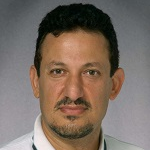Metamaterials for Near-Field Microwaves Sensing
A special issue of Sensors (ISSN 1424-8220). This special issue belongs to the section "Sensor Materials".
Deadline for manuscript submissions: closed (31 March 2021) | Viewed by 13717
Special Issue Editors
Interests: radiating systems; theoretical and computational electromagnetics; electromagnetic compatibility; interference and electronic packaging; biomedical applications of electromagnetics; photonics; material measurements; antennas; microwaves & photonics; medical imaging; scanning; energy harvesting/bio-energy; renewable energy; sensors and devices
Special Issues, Collections and Topics in MDPI journals
Interests: Material Characterization; Microwave Circuits; Artificial Intelligence
Special Issues, Collections and Topics in MDPI journals
Special Issue Information
Dear Colleagues,
When Smith, Pendry, and others started tinkering with split-ring resonators (SRR) for realizing double negative media, little did we know that these earlier ground-breaking works would usher in the beginning of a completely different perspective on the design of all types of electromagnetics-based systems. The SRR, or any other resonator that has dimensions much smaller than its wavelength, were used as building blocks for metamaterials, which in turn can be designed to provide media with properties that cannot be found in nature.
While these exotic media enabled the cloaking and design of dispersion-controlled media, the applications were largely limited. One of the emerging applications for SRR or metamaterial particles in general is in the area of microwave sensing. In the years following Pendry’s seminal work, metamaterial particles were used for the characterization of the electromagnetic properties of media. These early applications demonstrated, arguably for the first time, the possibility of designing near-field sensors that are suitable for specific applications. In recent years, numerous papers have been published where metamaterial particles are used to sense a variety of physical quantities and even for highly sensitive detection.
This Special Issue is intended to provide a holistic perspective, as much as possible, on the concept of designing metamaterials or metamaterial particles for microwaves near-field sensing and detection. Contributions are encouraged from academics and industrialists whose work is related to this subject. Authors are specifically encouraged to be explicit in their narratives describing their philosophy and design procedure rather than focusing largely on results.
Prof. Dr. Omar M. Ramahi
Dr. Vahid Nayyeri
Guest Editors
Manuscript Submission Information
Manuscripts should be submitted online at www.mdpi.com by registering and logging in to this website. Once you are registered, click here to go to the submission form. Manuscripts can be submitted until the deadline. All submissions that pass pre-check are peer-reviewed. Accepted papers will be published continuously in the journal (as soon as accepted) and will be listed together on the special issue website. Research articles, review articles as well as short communications are invited. For planned papers, a title and short abstract (about 100 words) can be sent to the Editorial Office for announcement on this website.
Submitted manuscripts should not have been published previously, nor be under consideration for publication elsewhere (except conference proceedings papers). All manuscripts are thoroughly refereed through a single-blind peer-review process. A guide for authors and other relevant information for submission of manuscripts is available on the Instructions for Authors page. Sensors is an international peer-reviewed open access semimonthly journal published by MDPI.
Please visit the Instructions for Authors page before submitting a manuscript. The Article Processing Charge (APC) for publication in this open access journal is 2600 CHF (Swiss Francs). Submitted papers should be well formatted and use good English. Authors may use MDPI's English editing service prior to publication or during author revisions.
Keywords
- Microwaves
- Near-field sensing
- Metamaterials
- Split-ring resonators
- Antennas
- Material characterization
- Surface detection
- Sub-surface detection







